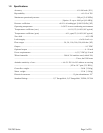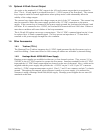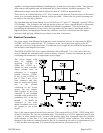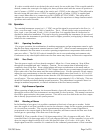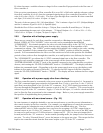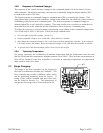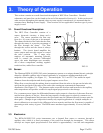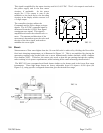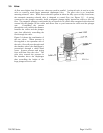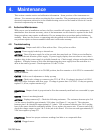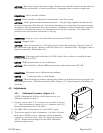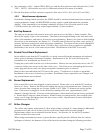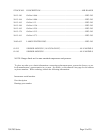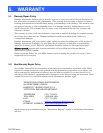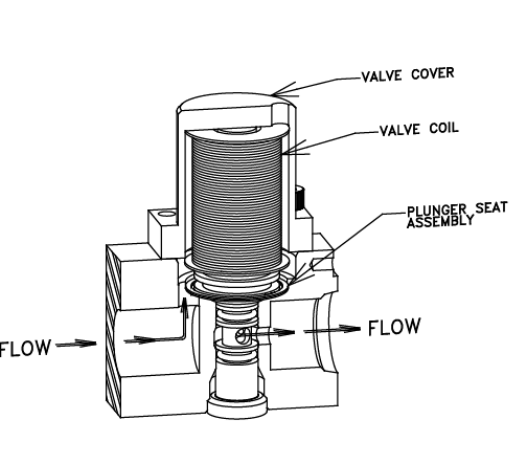
201/203 Series Page 14 of 20
3.5. Valve:
At flow rates higher than 30 slm, two valves are used in parallel. A solenoid valve is used as a pilot
valve to control a much larger pneumatic diaphragm valve. The pilot valve is an “automatic
metering solenoid” valve. While most solenoids operate in either the fully open or fully closed state,
the automatic metering solenoid valve is designed to control flow (see Figure 3.5). A spring,
connected to the plunger assembly, holds a magnetic plunger tightly against an orifice to shut off
flow. The magnetic plunger is surrounded by an electrical coil, which when energized with electrical
current lifts the plunger off the orifice and allows flow to pass between the orifice and the plunger
seat. Controlling the current
through the coil controls the distance
between the orifice and the plunger
seat, thus effectively controlling the
flow through the valve.
Figure 3.6 shows the combination of
the two valves. When pressure is
first applied to the upstream side of
the valve, flow will pass through until
the chamber above the diaphragm is
pressurized through a small bleed
screw. System pressure and spring
force will then close the valve. The
pilot valve controls the pressure in
the chamber above the diaphragm
thus controlling the height of the
large plunger above its seat.
FIG 3.6



